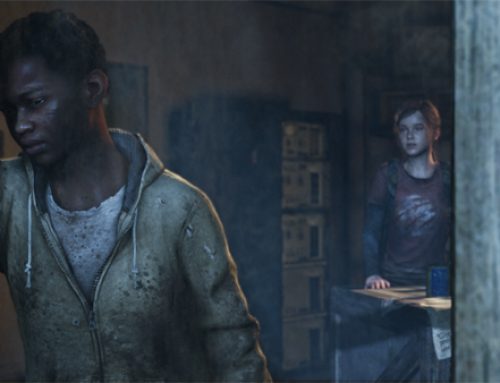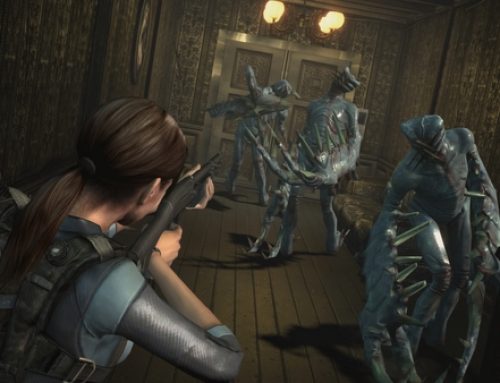
The first glimpse players get of Rapture circa 1968 indicates right away that something isn't right.
Seven months before its release, “BioShock 2” didn’t look anything like a Game of the Year contender. It was July 2009, and Take-Two Interactive announced the sequel to one of this console generation’s best-loved games would be delayed again, pushed all the way back into 2010 because it simply wasn’t good enough.
Like a lot of players who loved “BioShock,” I was skeptical of any follow-up. The first game (spoiler alert) ended with the main character escaping the crumbling, underwater utopia of Rapture, and living a contented life on land, surrounded by the “family” he’d rescued from the depraved depths. With the main character’s life story having played out, there seemed to be little justification for a sequel beyond the fact that it’d make Take-Two a pile of money.
Ken Levine, the creative director who dreamed up an art deco city under the sea and crafted one of gaming’s most memorable plot twists, wasn’t even involved with the sequel.
But “BioShock 2” (rated M, $20 for PC, Xbox 360 or PlayStation 3) delivered the sharpest, most convention-defying script of any game I played in 2010. For players wanting the evolution of the average video game story to move beyond save-the-princess/world scenarios, “BioShock 2” offers a way forward by putting a seemingly secondary character at the center of its universe.
Because “BioShock 2” has been out for nearly a year, I’ll be talking about the totality of its plot in general terms. I’m not planning on spoiling specifics, but I will be talking about things like story arc and character development. If you’re one of those people who regards any discussion of any event that happens after the first couple of hours of gameplay as a “spoiler,” avert your eyes.
The transcendent nature of “BioShock 2’s” story reveals itself slowly. At the game’s start, it’s 1958, and Rapture is in its swinging heyday. You’re a “Big Daddy,” one of the lumbering, diving-suit-clad walking tanks from the first game, assigned with protecting a “Little Sister,” a girl of about 6, named Eleanor.
At the end of the opening movie, you’re hypnotized and confronted by Sofia Lamb, a psychologist who says she’s Eleanor’s mother. Lamb orders your character to remove his mask and shoot himself in the head, which he does. He comes to 10 years later, after the fall of Rapture, when the city has been left for dead and forgotten about, allowed to become even more depraved than in the first game.
In the 10 years that have elapsed, Lamb has become the ruler of a collectivist “family” that runs the city, and Eleanor, taken away from you as a child, has become a teenager.
The rest of the game plays out like a custody battle between divorced parents. The player-controlled character, Subject Delta, seeks to reunite with his adoptive “daughter,” Eleanor, who’s left aid and clues all around what’s left of Rapture. Lamb, the girl’s biological mother, opposes the player at every turn.
What’s groundbreaking, even risky, about “BioShock 2,” is that its narrative revolves not around Subject Delta, but around Eleanor.
Players are asked to empathize with and care about a character whose presence is felt throughout the game, but who rarely appears on screen. “BioShock 2” can be summed up as a first-person shooter about raising a teenager to be a woman, and reacquainting yourself with a daughter you last saw when she was a little girl.
None of this is apparent from the get-go, as “BioShock 2’s” opening bears the hallmarks of a classic revenge tale. But the story, told through gameplay and audio diaries that fill in the timeline’s 10-year gap, shifts its focus so gradually you may need a second playthrough to appreciate everything.
Depending on your choices, “BioShock 2” doesn’t have to be a tale of vengeance at all. It makes as much of a case for turning the other cheek as a player can expect from a game that requires violently ending the lives of dozens of genetically altered, homicidal maniacs.
The first “BioShock” featured one of the most memorable, brain-bending plot twists in gaming, so it’s commendable that 2K Marin resisted the urge to try to top “Would you kindly?” and eschewed the idea of a “big reveal” altogether.
That’s not to say “BioShock 2” doesn’t have some jaw-dropping moments. Perhaps the biggest comes during one late-game level that you play through the eyes of a character other than Subject Delta. This character’s view of the violence-wracked, decaying city serves as a study on how Rapture’s denizens cope with adversity. I gleefully explored every last corner of this level, eager to see a now-familiar city through new eyes.

When you're done with "BioShock 2's" excellent single-player story, the "Minerva's Den" add-on spins a whole new tale that serves as a fitting goodbye to Rapture.
Even though “BioShock 2’s” multiplayer component failed to set new standards for excellence, players who finish the main game but still hunger for more can check out the $10 “Minerva’s Den” add-on. “Minerva’s Den” tells a new four- or five-hour story that takes place concurrently to the events in “BioShock 2” and revolves around two men’s battle for control of The Thinker, the supercomputer that runs Rapture.
The player, a Big Daddy known as Subject Sigma, teams up with recurring character Brigid Tenenbaum and Dr. Charles Milton Porter, the creator of The Thinker, in an effort to wrest control of the machine away from Porter’s former assistant. Through the use of audio diaries, the game adds extra emotional heft by chronicling Porter’s efforts to imbue The Thinker with the personality of his late wife, Pearl. I won’t spoil the ending, seeing as how fewer readers are likely to have played “Minerva’s Den,” but it does an excellent job of closing the book on Rapture and lives up to “BioShock’s” signature plot twist and the sequel’s satisfying close.
Before “BioShock 2” came out, I was skeptical 2K Marin could wring another 20-hour game out of the crumbling, flooded utopia of Rapture. Thankfully, I was wrong. It’s my Game of the Year for 2010.




